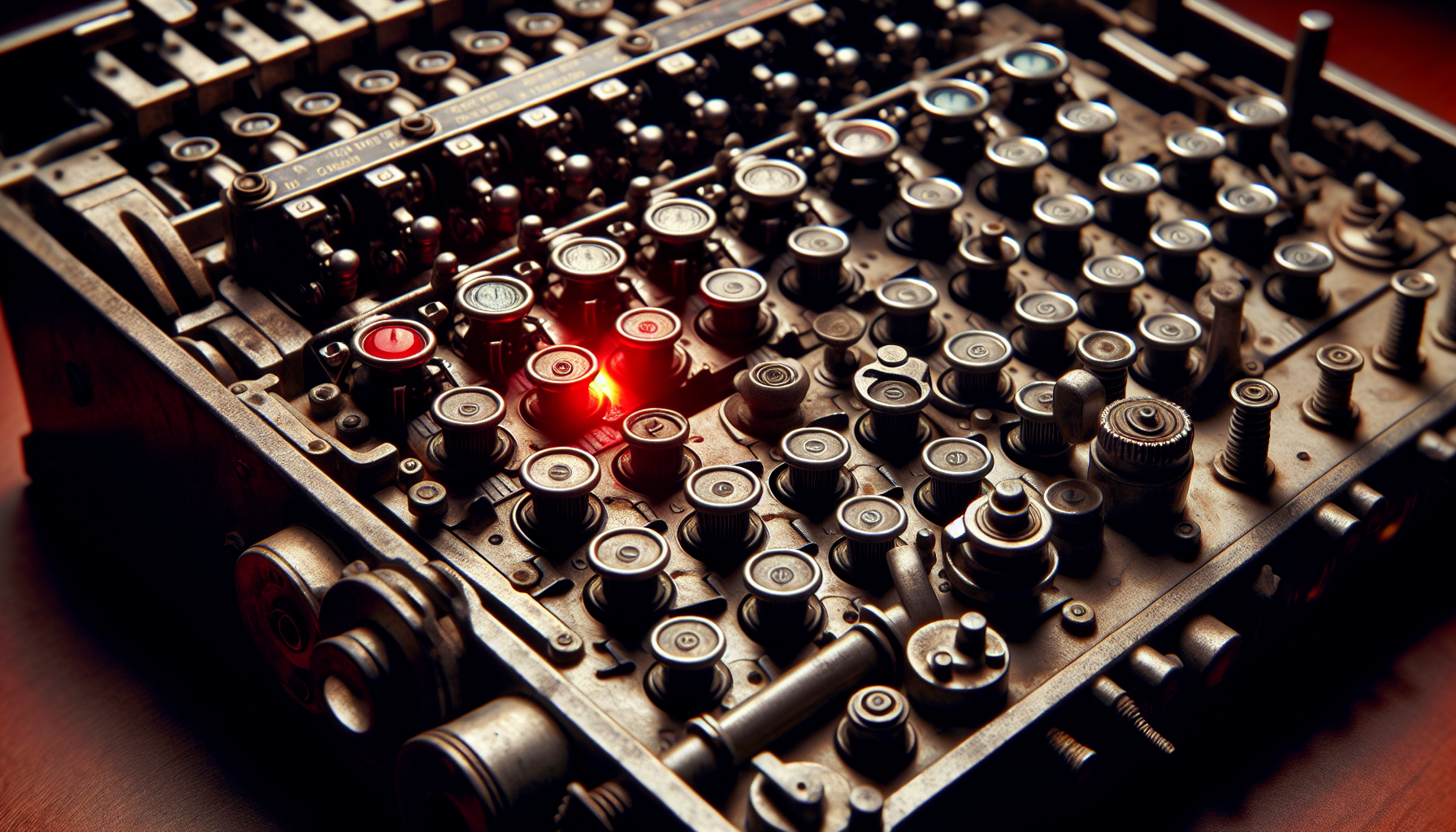
The enigma of breaking the naval Enigma code presented a formidable challenge to Allied cryptographers at Bletchley Park. The sheer volume of intercepted traffic, coupled with the machine’s sophisticated design, demanded innovative techniques and immense computational power. Early successes were sporadic and limited, offering only glimpses into the Kriegsmarine’s plans. However, the persistent efforts of brilliant minds, including Alan Turing and his team, eventually yielded significant breakthroughs. These breakthroughs, while initially slow and painstaking, gradually shifted the balance of power at sea.
The success in breaking the naval Enigma code wasn’t just about deciphering individual messages; it was about understanding the underlying patterns and procedures used by the German Navy. This deeper understanding of their operational methods proved to be just as crucial, if not more so, than the decrypted messages themselves. It allowed the Allies to anticipate German movements, predict their strategies, and ultimately, to disrupt their operations effectively. The intelligence gleaned from this codebreaking effort played a pivotal role in turning the tide of the Battle of the Atlantic, impacting the outcome of the war significantly, contributing to the Allied victory.
Breaking the Naval Enigma Code

One crucial element in breaking the naval Enigma was the capture of Enigma machines and codebooks from German U-boats. These physical captures provided invaluable insights into the machine’s workings and the specific settings used by the Kriegsmarine at different times. This intelligence, combined with the sheer volume of intercepted messages, allowed Bletchley Park’s codebreakers to begin piecing together the puzzle. Critically, the Allies also learned about the German Navy’s communication procedures, their message formats, and their operational habits – all vital pieces of the codebreaking jigsaw.
The breakthrough came not from a single eureka moment, but from a painstaking process of trial and error, statistical analysis, and the development of increasingly sophisticated machines to assist in the decryption process. Alan Turing’s contributions, particularly his work on the Bombe machine, were instrumental in speeding up the process. The Bombe, a sophisticated electromechanical device, could systematically test various Enigma settings, dramatically reducing the time required to decipher intercepted messages. The combination of human ingenuity and technological advancement proved to be a potent force.
The impact of successfully breaking the naval Enigma code was profound. The Allies gained an unprecedented level of intelligence on German U-boat movements, allowing them to anticipate their attacks and effectively counter their strategies. This led to a significant reduction in Allied shipping losses in the Battle of the Atlantic, a conflict that directly threatened the supply lines crucial to the Allied war effort. The codebreaking success provided vital information for the deployment of Allied convoys and anti-submarine warfare efforts. The outcome of the Battle of the Atlantic, and arguably the overall outcome of WW2, was profoundly shaped by the intelligence derived from breaking the naval Enigma code, contributing significantly to Allied victory.
It wasn’t simply a matter of reading the messages; the Allies also learned about the Kriegsmarine’s operational tactics and their decision-making processes. This strategic understanding allowed for proactive countermeasures, turning the tide of the war at sea. The ability to anticipate U-boat movements and ambush them effectively, directly resulting from successful codebreaking, was a game-changer in the struggle for control of the Atlantic. The previously insurmountable seemed, thanks to persistence and innovation, finally within reach.
Ultra Intelligence and the Battle of the Atlantic
This intelligence wasn’t just about knowing where U-boats were; it was about understanding why they were there. By deciphering Enigma, Allied commanders gained insights into German naval strategy, revealing patterns in U-boat patrols, targeting preferences, and even the decision-making processes of their commanders. This allowed for a more proactive, rather than reactive, approach to anti-submarine warfare.
For example, knowledge gleaned from broken Enigma messages enabled the Allies to predict and successfully intercept U-boat wolfpacks, those coordinated groups that posed the greatest threat to Allied convoys. Instead of reacting to attacks, Allied forces could anticipate them, deploying escorts and air cover strategically to minimize losses. This shift from a defensive to an offensive posture was a direct result of the intelligence derived from Enigma decrypts.
Furthermore, the ability to anticipate U-boat movements allowed for the optimization of convoy routes. Instead of sticking to predictable paths, which were easily targeted by the Germans, Allied convoys could adapt their routes based on the real-time intelligence provided by Bletchley Park. This adaptability significantly reduced the effectiveness of German ambushes and significantly increased the survival rate of vital supply ships.
The impact extended beyond tactical advantages. The strategic implications were equally profound. The flow of intelligence from Ultra, the codename for the codebreaking operation, allowed Allied high command to make better-informed decisions about resource allocation, naval deployments, and the overall conduct of the war at sea. The constant stream of decrypted Enigma messages provided a clearer picture of the enemy’s capabilities, intentions, and vulnerabilities, giving the Allies a significant advantage in the long game.
The success in breaking the naval Enigma code wasn’t just a technical achievement; it was a testament to the power of human ingenuity, collaboration, and the unwavering pursuit of a critical objective. The combined efforts of mathematicians, linguists, and engineers at Bletchley Park, alongside the bravery of those at sea who risked their lives to gather intelligence, ultimately played a pivotal role in winning the Battle of the Atlantic and, by extension, contributed significantly to the Allied victory in WW2.
The story of Ultra, and the breaking of the naval Enigma code, remains a compelling illustration of how intelligence gathering, especially through codebreaking, can fundamentally shift the balance of power in wartime, dramatically altering the course of history. The impact of this achievement resonated far beyond the immediate battlefield, shaping the strategic decisions that ultimately led to Allied success.
Impact on the Eastern Front
While the impact of Ultra on the Western Front is well-documented, its influence on the Eastern Front, though less directly apparent, was still significant. The diversion of German resources to counter Allied successes at sea, a direct consequence of naval Enigma decryption, indirectly eased pressure on the Soviet Union. By tying up substantial portions of the Kriegsmarine and the Luftwaffe in anti-submarine warfare and the defense of shipping lanes, the Allies lessened the threat of a potential German naval offensive in the Black Sea or a more effective air campaign against Soviet supply lines. This, in turn, freed up Soviet resources for use elsewhere.
Furthermore, the intelligence gathered from breaking the Enigma code wasn’t exclusively focused on naval matters. Though less frequently discussed, German Army and Luftwaffe communications were also intercepted and, to varying degrees, deciphered. While the Army Enigma was cracked earlier than the naval version, extracting actionable intelligence from the sheer volume of encrypted traffic remained a challenge. Nonetheless, snippets of information regarding troop movements, planned offensives, and logistical vulnerabilities provided valuable, if sometimes fragmented, intelligence to the Allies. This intelligence, even when incomplete, could be used to inform strategic decisions and, in some instances, help predict enemy actions.
The impact wasn’t always about direct battlefield application. The intelligence gleaned from Enigma decrypts could also influence Allied support to the Soviet Union. By better understanding German capabilities and intentions, Allied leaders could make more informed decisions about the timing and nature of aid shipments – be it vital supplies, equipment, or even the allocation of air support. Understanding the enemy’s logistics, for example, allowed for the targeting of crucial supply lines, weakening their war effort indirectly. This subtle yet important influence played a part in sustaining the Soviet war machine, contributing to their eventual victory alongside the Western Allies.
It’s crucial to acknowledge that the Eastern Front’s vastness and the complexities of the Soviet-German conflict mean that codebreaking’s influence here wasn’t as immediately decisive as it was in the Battle of the Atlantic. The scale of the fighting, the sheer number of troops involved, and the brutal nature of the conflict meant that even the most accurate intelligence could only offer a limited impact on the overall strategic picture. Yet, the cumulative effect of this intelligence, however fragmented or indirect, undoubtedly contributed to the overall Allied victory in WW2. It was a small but vital cog in a massive, complex machine.
The enigma of the Eastern Front’s complexity shouldn’t overshadow the significant, albeit often subtle, contribution made by codebreaking. The information, however incomplete, chipped away at the German war machine’s efficiency, easing pressure on the Soviets, and bolstering Allied support to a crucial ally. This ultimately helped shape the outcome of the war, reinforcing the overall significance of codebreaking in achieving Allied victory.
Codebreaking’s Overall Contribution to Allied Victory
The Allied victory in WWII wasn’t solely the result of brute force; intelligence played a pivotal, often underestimated, role. Codebreaking, particularly the breaking of the Enigma code, fundamentally altered the strategic landscape, influencing the course of the war in profound ways that extended far beyond the immediate battlefield. The impact wasn’t always a dramatic, decisive blow; often, it was a series of subtle shifts in the balance of power, a gradual erosion of the Axis’s capabilities and a steady strengthening of the Allied position.
Consider the cumulative effect: the disruption of German U-boat operations in the Atlantic, significantly reducing the threat to vital supply lines; the anticipation of enemy movements, allowing for more effective deployment of resources; and the informed strategic decisions made by Allied high command, all based on the intelligence gleaned from broken codes. These weren’t isolated incidents; they represented a consistent stream of actionable information that allowed the Allies to fight smarter, not just harder.
The success in codebreaking wasn’t merely about deciphering messages; it was about gaining a deep understanding of enemy operational procedures, strategic thinking, and even their decision-making processes. This strategic insight allowed the Allies to anticipate enemy actions, preempt their plans, and effectively counter their strategies. This proactive approach, a direct consequence of codebreaking, fundamentally shifted the dynamic of the war, turning the tide in numerous key battles and campaigns.
Furthermore, the diversion of Axis resources to counter Allied successes – successes directly attributable to codebreaking – further weakened their overall war effort. The constant pressure on German naval and air forces, forced to react to Allied countermeasures based on decrypted Enigma traffic, diverted manpower and materiel that could have been used elsewhere. This indirect impact, while less visible than direct battlefield successes, contributed significantly to the Allied war machine’s overall superiority.
The outcome of WWII was a complex tapestry woven from many threads, but the thread of codebreaking runs consistently through it. It’s a testament to the power of human ingenuity, persistence, and the importance of intelligence in shaping the course of conflict. The story of codebreaking in WW2 is a powerful reminder that the battle for information can be just as crucial, if not more so, than the battles fought on land, sea, and air. The ultimate victory was, in no small part, a victory of intelligence.

